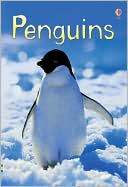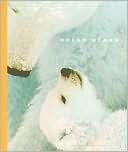The Virtual Bookshelf provides a list of recommended children’s books that reflect the theme of the issue and offers ideas on how to integrate them across the curriculum.
This month’s bookshelf will help students learn about the different types of scientists who come to Antarctica from around the world to do research they cannot do anywhere else on the planet. Antarctica’s thick ice sheets hold clues to the history of the earths climate, and Antarctica is one of the best places for astrophysicists to peer deep into outer space. Biologists come to Antarctica to learn how living things adapt to such an extreme environment, while geologists are able to uncover clues about the life that once flourished in the Arctic.
Science at the poles
 |
Explore Antarctica. Bobbie Kalman and Rebecca Sjonger. 2007. Nonfiction. Grades K-2.
Readers will learn that only about 1,000 people stay in Antarctica during the winter and most of those people are scientists. The scientists live in groups of buildings called research stations. There are 58 research stations across Antarctica. |
 |
Sea Secrets: Tiny Clues to a Big Mystery. Mary M. Cerullo and Beth E. Simmons. 2008. Nonfiction. Grades 2-5.
Students are engaged in mysterious changes happening to seabirds, whales, and penguins. They learn about the Long-Term Ecological Research (LTER) Network and how this effort has helped scientists understand the effect of warming ocean water on marine food webs. Download lesson plans and other materials from the LTER web site. |
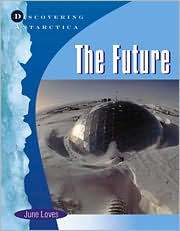 |
Discovering Antarctica: The Future. June Loves. 1998. Nonfiction. Grades 3-5.
This book describes the discovery and exploration of Antarctica, territorial claims, treaties, tourism, and global scientific cooperation in terms of the future. |
 |
Antarctic Journal: Four Months at the Bottom of the World. Jennifer Owings Dewey. 2001. Nonfiction. Grades 3-5.
Readers get a glimpse of an artist’s four-month stay in Antarctica through her sketches and photos, journal entries, and letters home. |
 |
Life on the Ice. Susan E. Goodman. 2006. Nonfiction. Grades 3-5.
The photographs in the book take readers on a tour of the world’s ice landscapes, primarily Antarctica. The book discusses the nature of the extreme climate, the planes that fly there, the scientists who study it, and what it takes to live in this environment. |
 |
Pioneering Frozen Worlds. Sandra Markle. 1996. Nonfiction. Grades 4-5.
A primary science teacher turned writer explains how scientists are using technology to research the many forms of ice and snow, the wildlife, the atmosphere, and more at the poles. With each research field, she offers an investigation children can carry out alone or with classmates.http://beyondpenguins.ehe.osu.edu/wp-admin/post-new.php?post_type=issue-19 |
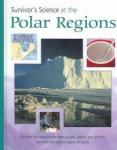 |
Survivor’s Science at the Polar Regions. Peter D. Riley. 2005. Nonfiction. Grades 4-5. The information and science activities in this book explain what you would need to know to survive on an expedition in the Arctic or Antarctic. What should you wear in the special weather conditions? How do you travel across snow, ice, and tundra? |
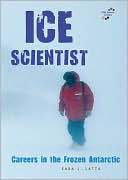 |
Ice Scientist: Careers in the Frozen Antarctic. Sara L. Latta. 2009. Nonfiction. Grades 4-5.
Designed for older learners, this resource explores different careers using the stories of real scientists in Antarctica. Included among the careers are geologist, paleontologist, glaciologist, astrophysicist, marine biologist, and oceanographer. Boxed text throughout adds interesting facts about the scientific research and Antarctica. |
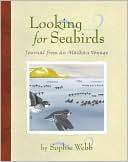 |
Looking for Seabirds: Journal from an Alaskan Voyage. Sophie Webb. 2004. Outstanding Science Trade Book Award 2005. Nonfiction. Grades 4-5.
Biologist Sophie Webb sails to the Aleutian Islands on the research ship Alpha Helix to study arctic seabirds. The ship follows plankton populations and kelp beds to capture a realistic picture of the behavior of auklets, petrels, albatross, fulmars, and murres at sea and on land. Simple watercolor illustrations capture the grandness of the landscape and the beauty of arctic birds. |
 |
My Season With Penguins. Sophie Webb. 2000. Outstanding Science Trade Book Award 2001. Nonfiction. Grades 4-5.
Follow biologist Sophie Webb as she chooses cold weather clothing, attends survival school, and sets up a camp at Cape Royds (within view of Mount Erebus). Here she studies Adelie penguins for two months. She explains methods for tagging, weighing and tracking penguins and shares the research questions her group hopes to answer. This book would complement the real-time Cape Royds nest check activity on the Penguin Science web site. |
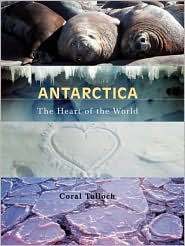 |
Antarctica: The Heart of the World. Coral Tulloch. 2003. Nonfiction. Grade 5 and up.
A chapter in this book lists scientific programs underway in Antarctica. The list includes astronomy, atmospheric sciences, biology, Antarctic marine living resources, cosmic ray physics, geosciences, glaciology, and human impacts. Short notes from the scientists about their work appear throughout the book. |
PENGUINS AND POLAR BEARS
This article was written by Julie Moran. For more information, see the Contributors page. Email Kimberly Lightle, Principal Investigator, with any questions about the content of this site.
Copyright April 2010 – The Ohio State University. This material is based upon work supported by the National Science Foundation under Grant No. 0733024. Any opinions, findings, and conclusions or recommendations expressed in this material are those of the author(s) and do not necessarily reflect the views of the National Science Foundation. This work is licensed under an Attribution-ShareAlike 3.0 Unported Creative Commons license.

